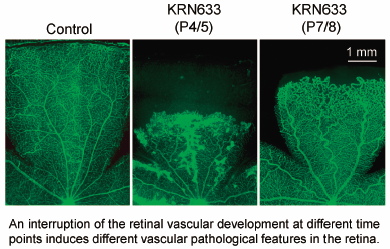- 著者
- Miyuki Konya Shiho Arima Daiki Lee Masaki Ohtawa Kenta Shimoyama Takashi Fukuda Ryuji Uchida Hiroshi Tomoda Noriyuki Yamaotsu Nobutada Tanaka Tohru Nagamitsu
- 出版者
- The Pharmaceutical Society of Japan
- 雑誌
- Chemical and Pharmaceutical Bulletin (ISSN:00092363)
- 巻号頁・発行日
- vol.70, no.4, pp.261-268, 2022-04-01 (Released:2022-04-01)
- 参考文献数
- 19
- 被引用文献数
- 3
Habiterpenol is a G2 checkpoint inhibitor isolated from the culture broth of Phytohabitans sp. 3787_5. Here, we report the synthesis of new habiterpenol analogs through the total synthesis process of habiterpenol and evaluating the analogs for G2 checkpoint inhibitory activity. We investigated two different synthetic approaches for total synthesis, with intramolecular conjugate addition and Ti(III)-mediated radical cyclization as key reactions. Although the former was unsuccessful, the latter reaction facilitated stereoselective total synthesis and determination of the absolute configuration of habiterpenol. The extension of these chemistries to a structure–activity relationship (SAR) study gave new habiterpenol analogs, which could not be derived from natural habiterpenol and only be synthesized by applying the total synthesis. Therefore, this study provides important insights into SAR studies of habiterpenol.
- 著者
- Ryo Kondo Ayuki Nakano Daiki Asano Akane Morita Shiho Arima Asami Mori Kenji Sakamoto Tohru Nagamitsu Tsutomu Nakahara
- 出版者
- The Pharmaceutical Society of Japan
- 雑誌
- Biological and Pharmaceutical Bulletin (ISSN:09186158)
- 巻号頁・発行日
- vol.43, no.5, pp.859-863, 2020-05-01 (Released:2020-05-01)
- 参考文献数
- 26
Pathological angiogenesis is a leading cause of blindness in several retinal diseases. The key driving factor inducing pathological angiogenesis is the pronounced hypoxia leading to a marked, increased production of vascular endothelial growth factor (VEGF). The aim of this study was to determine whether the abnormal vascular growth occurs in a manner dependent on the degree of the vascular defects. Vascular defects of two different degrees were created in the retina by subcutaneously treating neonatal rats with the VEGF receptor (VEGFR) tyrosine kinase inhibitor KRN633 on postnatal day (P) 4 and P5 (P4/5) or P7 and P8 (P7/8). The structure of the retinal vasculature changes was examined immunohistochemically. Prevention of vascular growth and regression of some preformed capillaries were observed on the next day, after completion of each treatment (i.e., P6 and P9). The vascular regrowth occurred as a result of eliminating the inhibitory effect on the VEGFR signaling pathway. KRN633 (P4/5)-treated rats exhibited a retinal vasculature with aggressive intravitreal neovascularization on P21. On the other hand, the appearance of tortuous arteries is a representative vascular pathological feature in retinas of KRN633 (P7/8)-treated groups. These results suggest that an interruption of the retinal vascular development at different time points induces different vascular pathological features in the retina. Pharmacological agents targeting the VEGF signaling pathway are useful for creating an abnormal retinal vasculature with various pathological features in order to evaluate the efficacy of anti-angiogenic compounds.

